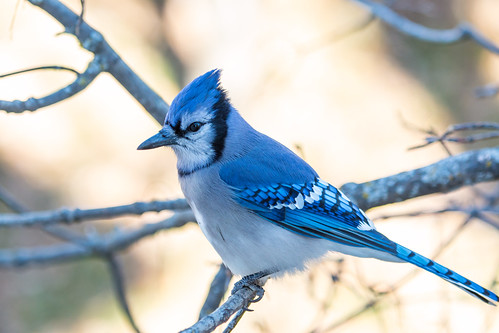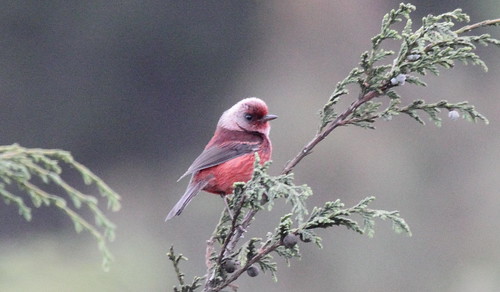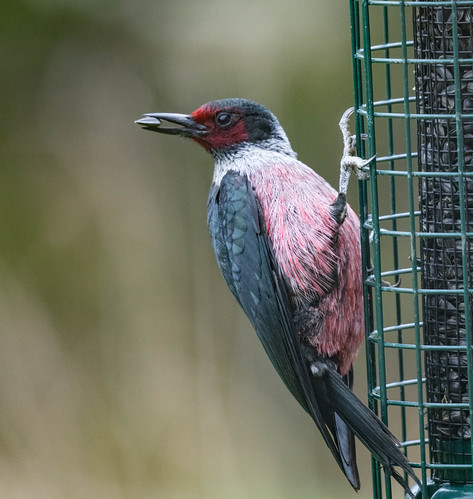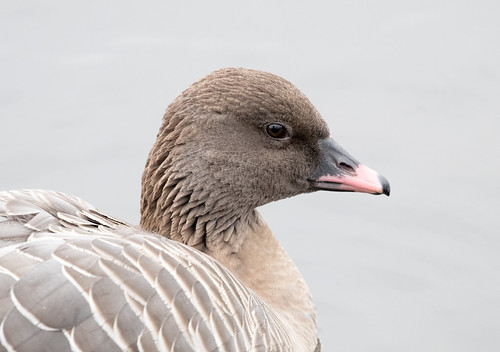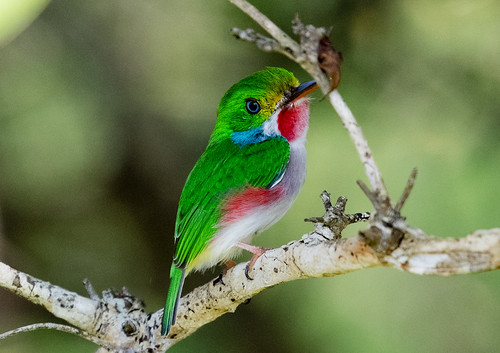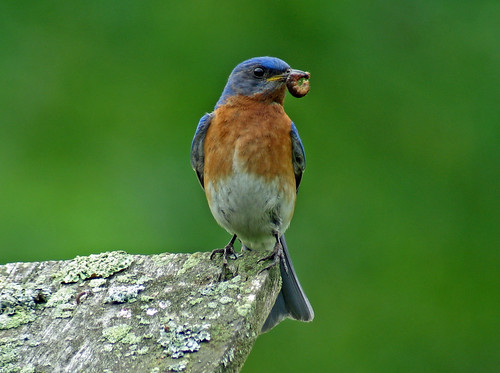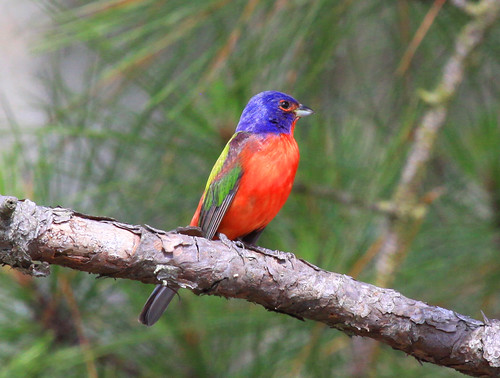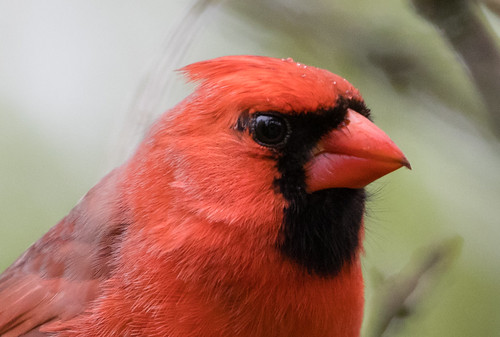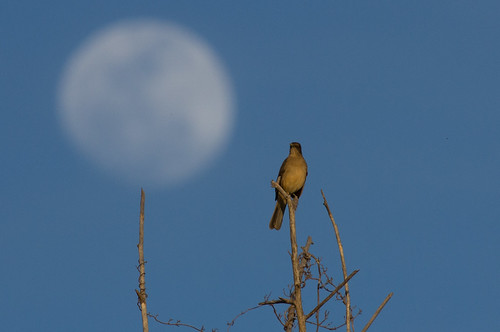Just about every month, we have one full moon. Not every single month—this February will not have a full moon at all. To make up for that, January has two. Tonight’s full moon, the second this month, is what many people call a blue moon. And whenever a month has a blue moon, I declare it National Blue Jay Awareness Month.
Why should we be more aware of Blue Jays than of any other bird? This year March happens to have a blue moon, too—though oddly enough, that fourth full moon of the year happens to be called the pink moon. Maybe when the moon is pink, everyone should become more aware of the Pink-headed Warbler of Guatemala and Chiapas, Mexico,
or Lewis’s Woodpecker,
or the Pink-footed Goose,
or the most adorable bird in the universe, the Cuban Tody.
But there are only 12 months in the year, and at most only 13 full moons in a year. It would take almost a millennium to give every bird on earth its own awareness month, and more than 83 years to give just every bird in the United States and Canada its own awareness month.
Maybe instead of a whole month, we could give different birds their own awareness day. On the first day of winter, what Robert Frost called the “darkest evening of the year,” we should all grow more aware of crows, ravens, and other dark birds. Maybe on national holidays we should celebrate the Eastern Bluebird for its red, white, and blue plumage,
or the Painted Bunting because it’s more intensely red and blue even if it’s missing the white.
On Catholic holy days we could try to be more aware of Northern Cardinals, who were given their name for their color, which matches the garb of Roman Catholic cardinals.
If we devoted a single day to each species, it would take almost 28 years to give just our North American species their due. Over the 32 years I’ve produced For the Birds, I’ve archived 3,072 programs, in which I’ve mentioned 785 different species at least once. I’ve talked about Blue Jays, or at least mentioned them, in at least 348 programs, and about Black-capped Chickadees at least 409 times. Even during National Blue Jay Awareness Month, I figure a day without chickadees is a day without sunshine, yet my favorite bird appears in only about 13 percent of my programs.
I wish more of us were aware of more birds, from the common species in our everyday lives to the more secretive or rare ones, like owls, that we thrill at whenever we do luck into seeing one, to the ones that most people haven’t even heard of—the species that eke out their existences in our state, even our city, without most of us ever noticing. This world has so many real treasures, living and breathing gifts of inestimable value even if we get so consumed by materialism that we are blinded to so much that really matters. That’s why I started producing For the Birds in the first place, but also why I decided to create a National Blue Jay Awareness Month. It’s nice to focus a lot of attention on one common species, at least once in a blue moon.
Blue Jays aren’t likely to notice tonight’s full moon, or the lunar eclipse that will begin, at least the penumbral phase, at 4:51 am tomorrow here in Duluth, Minnesota. Unlike nocturnal migrants, Blue Jays tend to sleep through the night year-round. When I rehabbed and through all the years that I had my education Blue Jay Sneakers, I never noticed a jay stirring once it got dark. But if we humans wake up early and there aren’t clouds in the west, we may notice that moon will start turning red as the partial eclipse phase begins, here in Duluth at 5:48 am. Totality won’t start until 6:51, as the sky is brightening, and the maximum eclipse will start at 7:29, just 7 minutes before the moon sets here. People east of us will see even less of it.
Blue Jays will be waking up during the eclipse, but we’ll never know if they noticed. It’s a pretty safe bet they know nothing about blue moons, which are defined by our human calendar and acknowledged by only some of us anyway. Beyond that, we simply do not know what Blue Jays, or any other birds, think about celestial matters. Chickadees, nuthatches, and woodpeckers, sleeping in cavities, don’t see much of the moon at night ever, and I don’t know if they notice the moon in the daytime sky, either. What goes on in birds’ minds is a true mystery to us humans, with all our anthropocentric limitations. Brooks Atkinson wrote:
Although birds coexist with us on this eroded planet, they live independently of us with a self-sufficiency that is almost a rebuke. In the world of birds a symposium on the purpose of life would be inconceivable. They do not need it. We are not that self-reliant. We are the ones who have lost our way.
